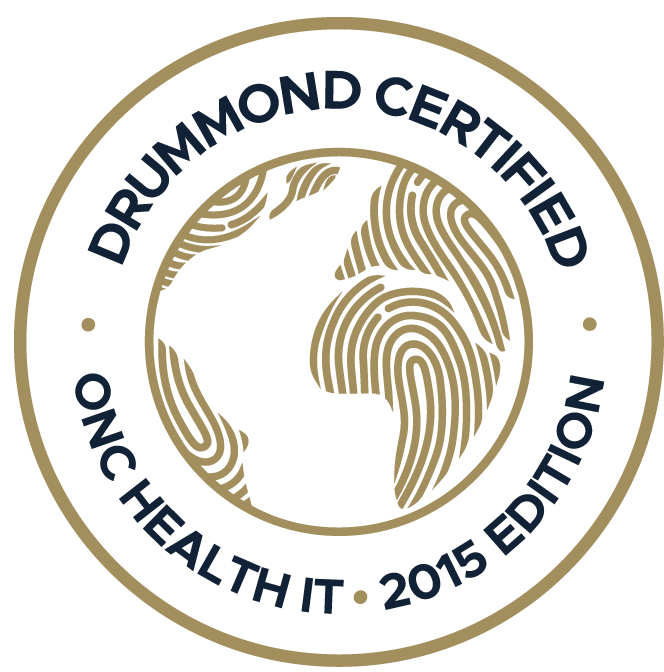Urgent care practice management isn’t easy, but it can be less frustrating with the right urgent care EHR features. Comprisingan industry of $3.10 billion, urgent care clinics are freestanding facilities that provide...

Healthcare practice office management can quickly become a daunting aspect of running a healthcare setup. Moreover, the costs associated with administrative tasks of a small practice office management serve as a financial burden. One way to streamline and speed up healthcare practice office management is through an integrated EHR. If it hasn’t happened already, your practice will probably adopt an EHR system soon due to the mandated HITECH Act of 2009. While this may seem daunting and laborious now, we promise many benefits to integrating an EHR-PM system. Opting for an EHR will be a great decision, boosting patient satisfaction and your practice’s overall efficiency and interoperability.
Here, we discuss five ways to speed up your healthcare practice office management with integrated EHR:
1. Automatic Appointment Reminders
Office managers have a lot to do, that’s obvious, so placing calls to confirm appointments sometimes falls by the wayside. This tends to result in missed appointments and scheduling errors. EHR systems are the solution to this problem: Practices can now send automatic phone calls and auto-messages to patients’ phones.
EHR solutions revolutionize healthcare practice office management with automatic appointment reminders. These digital notifications efficiently remind patients of upcoming appointments through SMS, emails, or automated calls. This not only reduces no-show rates but also enhances overall scheduling efficiency. Additionally, integrated EHR systems allow you to effortlessly text your patient, enabling you to connect with your patients from any location on cell phones.
The automated reminders can be tailored to the patient's preference and time zone, ensuring a personalized approach. Patients appreciate the convenience and are more likely to attend appointments punctually, optimizing the practice's daily schedule. This feature leads to a more organized and streamlined healthcare facility operation.
Furthermore, the administrative burden on the front desk staff is significantly reduced, allowing them to focus on other critical tasks. With automated reminders for appointment notifications, the staff can allocate their time and efforts elsewhere. They can focus on delivering exceptional patient care and managing other essential office functions.
2. One Screen to Rule Them All
Gone are the days when office managers and doctors had to organize and systematize thousands of patients’ confidential records. Today, integrated EHR systems allow a patient’s historical medical records to be easily navigable from one screen.
An EHR solution consolidates essential information onto one screen, streamlining healthcare practice office management. This single interface presents a comprehensive view, integrating patient records, schedules, billing details, and more. Moreover, the simplicity of having all crucial data accessible in one place accelerates the decision-making process and improves workflow efficiency. Instead of navigating multiple systems or paperwork, healthcare providers can swiftly access all the critical information they need. Thus, it saves time and reduces the risk of errors during data transfer or when dealing with various platforms. In short, a unified screen facilitates a more seamless and organized approach to managing office tasks.
Additionally, the unified screen design enhances staff collaboration. Team members can easily view and update information, promoting real-time communication and ensuring everyone is on the same page. The result is a more cohesive and productive work environment where staff can efficiently coordinate their efforts to provide optimal patient care.
3. Automated Claim Management
One common complaint to all healthcare practices is the constant headaches and lost revenue associated with poor claim management. The reality is that insurance companies don’t always make it easy to settle their claims. In fact, claim settlement usually requires constant follow-up with the payers.
EHR solutions offer automatic claim management, a pivotal tool in accelerating healthcare practice office management. With this feature, the system takes charge of claims submission, tracking, and follow-up. It ensures accurate claim generation, thereby reducing the chances of denials and delays in reimbursement. Moreover, automation in claim management significantly minimizes manual errors, a common issue in the medical billing process. Accurate claims submission speeds up the reimbursement cycle, ensuring the practice receives payments promptly. This translates to improved cash flow and financial stability for the healthcare facility.
Furthermore, automated claim management provides real-time status updates on claims. This allows the administrative staff to promptly identify and address issues, ensuring an optimal revenue cycle. What’s more? The seamless processing of claims enhances the overall efficiency of the practice, allowing the staff to focus more on delivering optimal patient care.
4. Integrated Clearinghouses
Once these claims are scrubbed clean, 99% of them can then be submitted to clearinghouses. Some EHR software comes standard with a fully integrated clearinghouse, making the claims process easier and faster than it’s ever been. According to the Centers for Medicare and Medicaid Services, 30% of claims are denied/ignored on the first submission to insurers, and 60% are never resubmitted.
Integrated clearinghouses in EHR solutions revolutionize healthcare practice office management. These streamlined platforms serve as intermediaries between the healthcare practice and insurance companies. They automatically process claims, verify patient eligibility, and handle billing tasks, eliminating the need for manual intervention. By seamlessly connecting with payers, integrated clearinghouses provide real-time updates on the status of claims. This transparency ensures that healthcare providers are promptly informed about claim rejections or acceptance. Moreover, it enables quick corrections, accelerating reimbursement and enhancing the practice's financial efficiency.
Additionally, integrated clearinghouses, like Practice EHR, standardize claim formats and data submissions according to industry standards. This conformity significantly reduces claim rejections due to formatting errors or missing information. The reduction in the rate of denials leads to a more efficient billing process, minimizing delays in receiving payments.
5. Patient Portal
The best EHR systems save office managers time by allowing patients to pay bills and securely communicate with their doctors through a patient portal. This way, patients can receive services from the comfort of their homes, on the train, or even in the waiting room. These cloud-based features directly affect the patient-doctor relationship, resulting in more organized communication, higher retention rates, and happier patients!
A patient portal is a digital gateway that EHR solutions provide, allowing patients to participate in their healthcare actively. This platform will enable patients to access their medical records, review test results, request appointments, and communicate with their healthcare providers. It empowers patients to take charge of their health and enhances the overall efficiency of healthcare practice office management.
That’s not all! Patients can conveniently view their upcoming appointments and receive automated reminders through the patient portal. This reduces no-show rates, optimizing the healthcare provider's schedule and ensuring the practice operates at its maximum capacity. The streamlined appointment system through the patient portal leads to a more organized office management process.
Moreover, patients can privately contact their healthcare providers, seeking clarifications, discussing concerns, or requesting prescription refills. This direct line of communication enhances patient engagement and allows healthcare providers to respond promptly. The patient portal acts as a communication hub, benefiting patients and healthcare practice.
Practice EHR - ONE That Boosts Practice Office Management
Practice EHR has been designed to meet the needs of all kinds of healthcare setups, from small practices to tertiary care hospitals. With its intuitive and resourceful electronic health record software, Practice EHR streamlines administrative tasks that require intense labor and time. Moreover, onboarding is easier with our cooperative customer support team 24/7 at your service.
Request a Demo today and explore the limitless opportunities of streamlining your practice office management with Practice EHR!
Topics: Integrated EHR, Patient Care, Small Practice, EHR Solution, New Technology, EHR, Billing for Private Practices, EHR Features
RECENT POSTS



TOPICS
- EHR Solution (183)
- EHR (121)
- Patient Care (113)
- digital age (113)
- Specialty-Specific EHR (106)
- Medical Billing (96)
- Industry Update (86)
- Technology in Healthcare (82)
- Small Practice (73)
- EHR Features (68)
- Medical billing services (68)
- Integrated EHR (60)
- HIPAA Security (56)
- RCM (53)
- New Technology (47)
- Cloud-based EHR (38)
- Healthcare Office Management (38)
- Practice EHR News (38)
- Telemedicine (38)
- Kiosk (31)
- Revenue Cycle Management (23)
- ePrescribing (21)
- AI Solutions (19)
- AI Scribing (13)
- EMR (12)
- Practice Management Software (11)
- Client Favorites (10)
- Practice Automation (10)
- Switching to New EHR (10)
- TeleVisit (10)
- The ONE (10)
- MACRA/MIPS (8)
- Patient Portal (8)
- Urgent Care (8)
- E-Prescribing (6)
- Product Updates (6)
- events (6)
- AI EHR (5)
- MIPS (5)
- Psychiatry EHR (5)
- AI scanning (4)
- Insider (4)
- Internal Medicine EHR (4)
- MIPS Reporting (4)
- Orthopedics EHR (4)
- Podiatry (4)
- Podiatry EHR (4)
- Telehealth Platform (4)
- AI Scribe (3)
- Best EHR Software (3)
- Chiropractic EHR (3)
- Digital Experiences (3)
- EHR for Chiropractors (3)
- Family Medicine EHR (3)
- HIPAA (3)
- Patient Check-in Kiosk (3)
- Regulatory Updates (3)
- Telehealth Platforms (3)
- AI-powered Medical Billing (2)
- Automated Health Tools (2)
- Billing for Private Practices (2)
- Clearinghouse (2)
- Dermatology EHR (2)
- EHR Scheduling (2)
- Eligibility Verification in Medical Billing (2)
- Foot and Ankle Care (2)
- Foot and Ankle EHR (2)
- Health records 101 (2)
- Integrated Practice Management (2)
- Medical Credentialing (2)
- Medical Practice Management Software (2)
- Mobile EHR (2)
- Quality of Patient Care (2)
- Reporting Under MIPS (2)
- Risk and Liability in Medical Settings (2)
- What Works Clearinghouse (2)
- Bariatric EHR (1)
- Behavioral Health Practices (1)
- Billing Communication (1)
- Cardiology EHR (1)
- Cash Flow (1)
- Cashless Payments (1)
- Charting (1)
- Data Security (1)
- Dos and Don'ts (1)
- EHR Guides (1)
- EHR Implementation (1)
- EHR KPIs (1)
- EHR Questions to Ask (1)
- EHR Transition (1)
- EHR for Chronic Illness (1)
- EHR for Small Practices (1)
- EMR vs EHR Difference (1)
- ENT EHR (1)
- Endocrinology EHR (1)
- Family Medicine (1)
- Gastroenterology (1)
- Gastroenterology EHR (1)
- General Surgery EHR (1)
- Geriatric AI scribe (1)
- Geriatrics EHR (1)
- Guides (1)
- Healthcare Compliance Certification (1)
- Healthcare Practice Office Management (1)
- Help Center Videos (1)
- Insurance Reimbursement (1)
- KPI (1)
- Key Performance Indicators (1)
- Lab Processing (1)
- MACRA (1)
- Medical Billing Partner (1)
- Medical Coding Services (1)
- Multilingual AI Scribe (1)
- Nephrology EHR (1)
- Neurology EHR (1)
- Pain Management EHR (1)
- Pediatrics EHR (1)
- Physical Therapy EHR (1)
- Practice Cash Flow (1)
- Practice Efficiency (1)
- PracticeEHR GO App (1)
- Pulmonology EHR (1)
- Reconsider Your EHR (1)
- Simplify Practice Management (1)
- Staffing in Healthcare (1)
- Switch Medical Billing Providers (1)
- Urgent Care Medical Billing (1)
- Urology EHR (1)
- Voice-Activated AI Scribe (1)
- insurance claim denials (1)








